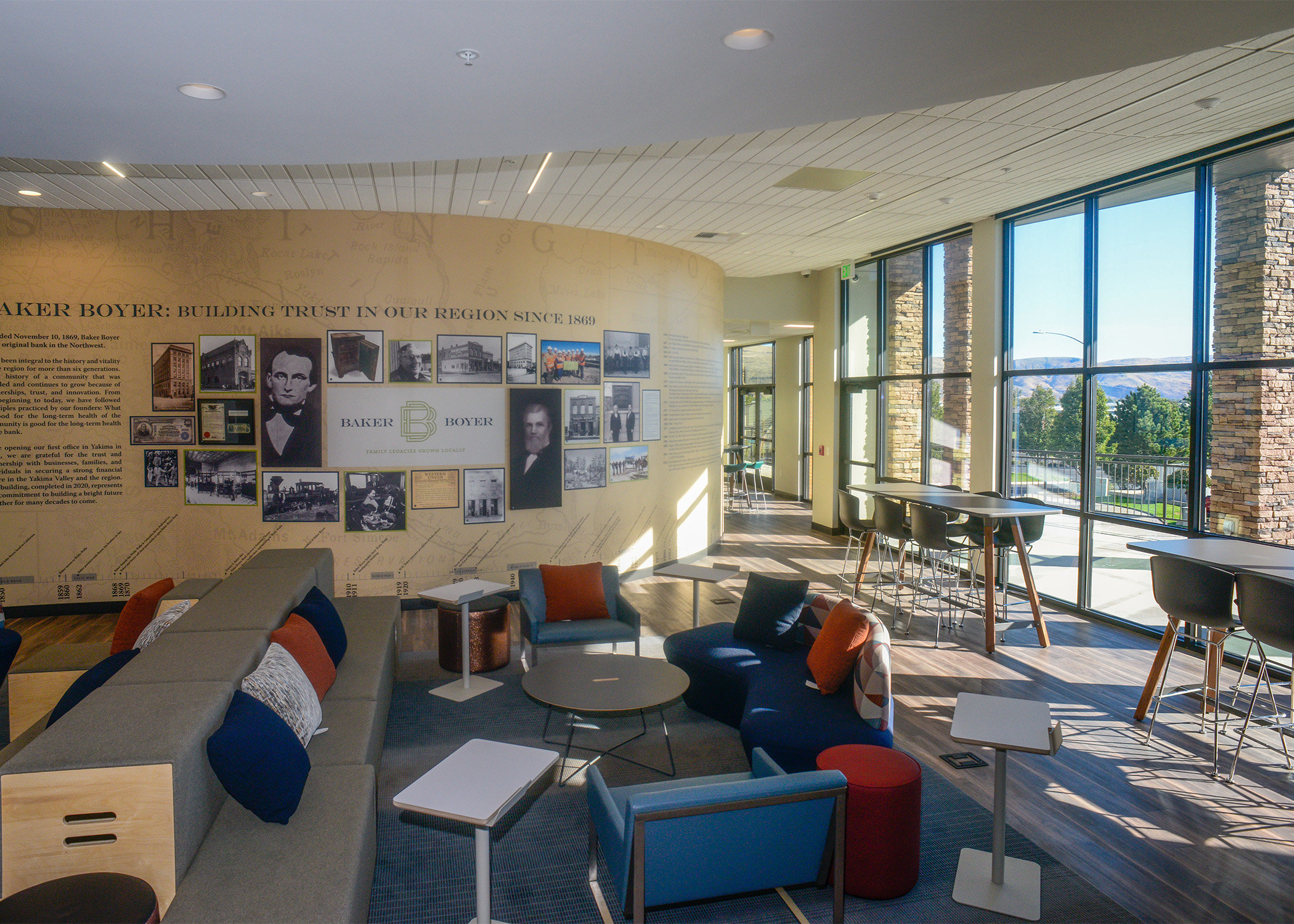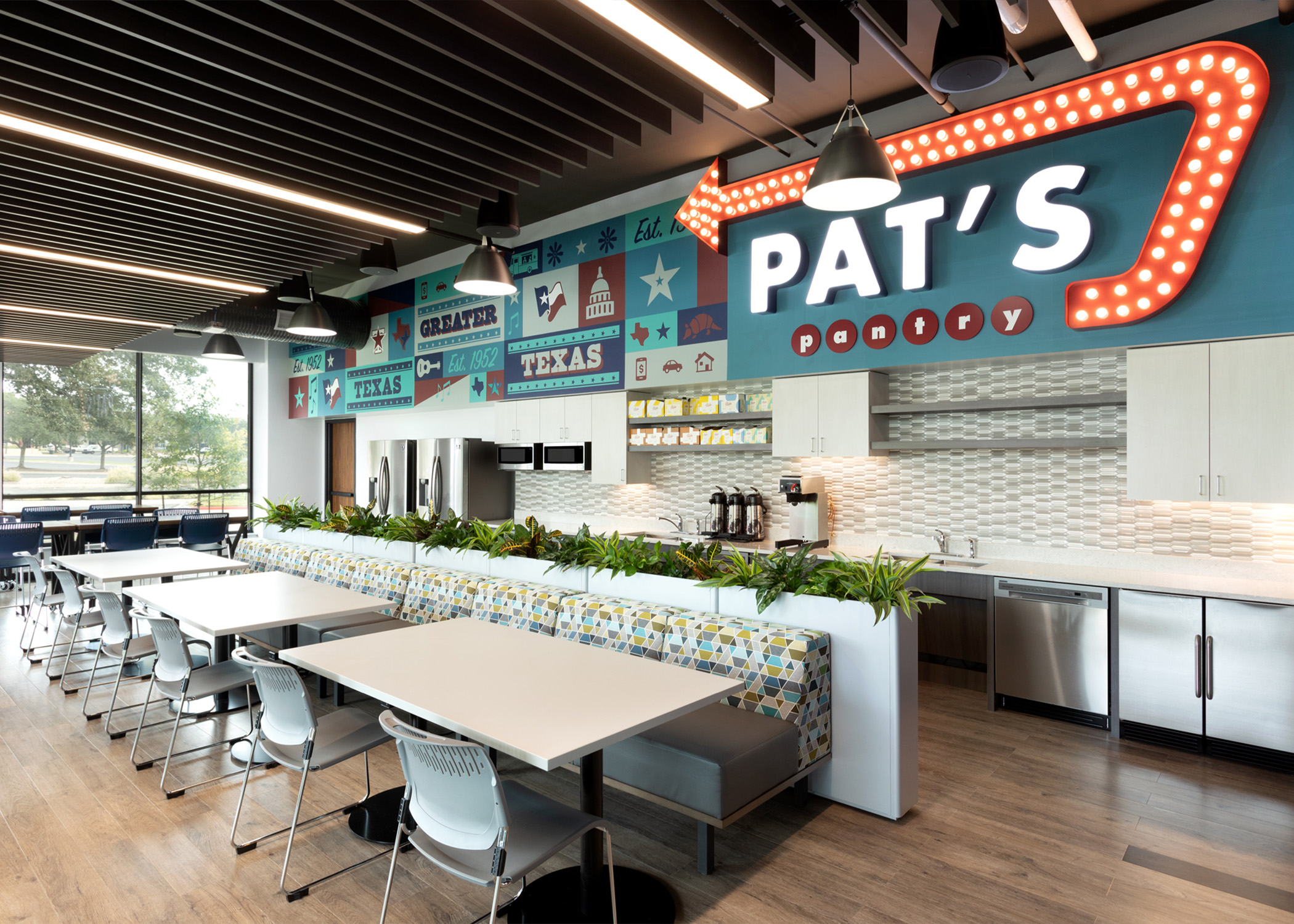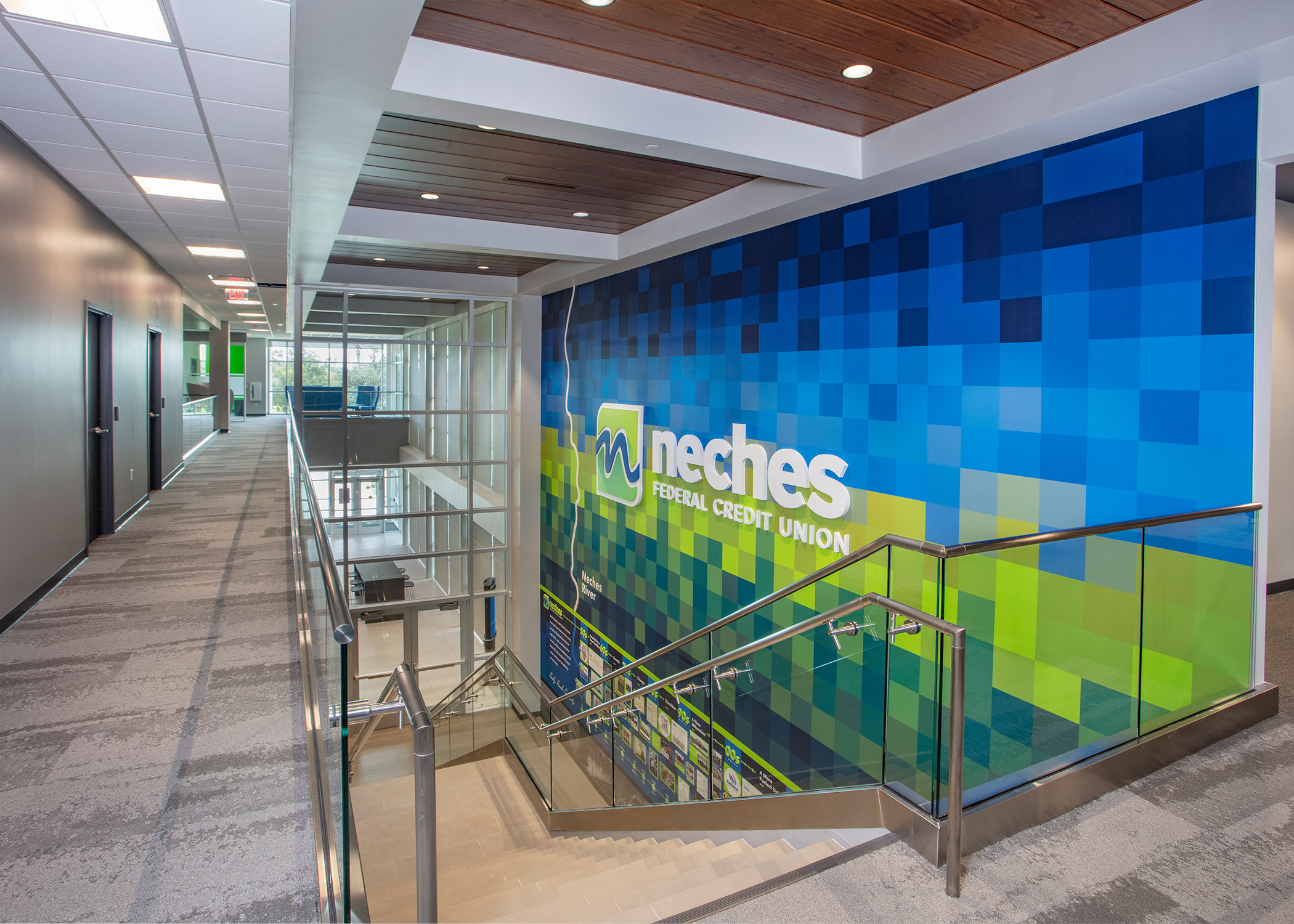Many financial institutions ask themselves the same question. How do I honor my past legacy without looking outdated and out of touch? This common question comes from the need to maintain modern amenities, design choices, and branding. For many financial institutions, their past is more than just a memory. It’s a history that showcases their journey from a small institution to a large staple of their community. Updating designs and interiors can seem important, but so is honoring the consumers and employees who helped them reach this point. So, what’s the key to finding this balance? The answer lies in a type of design called environmental graphics.

The Environmental Graphic Process
Environmental graphics are different from traditional interior design signage. Environmental graphics incorporate history, strategy, design, architecture, build, and many other facets into one singular piece, and it all starts with strategy. At the beginning of each project, an environmental graphic designer meets with the Strategy Team and the client. In this meeting, they aim to learn all about what is important to the client. In most cases, clients want to pay homage to their history instead of erasing it entirely. Some financial institutions are the result of mergers. In both cases, the institutions want their consumers to know that they are still the brand they know and love even if the design, feel, or branding itself is different. They also want to retain their staff and recruit new, talented staff to support their growth.
Interested in learning the impact your HQ space has on talent retention? Check out our Insight Article here!
Environmental Graphics Start with Research
Once they’ve gathered the initial strategy, the environmental graphic designer starts their research. Chloe Peterson, an Environmental Graphic Designer at NewGround, says that her research starts in branding. “I research how it [the organization] is presented through their website, social media, in the branch, and signage. I also look to understand their branding/graphic evolution through the years,” she says.
The environmental graphic designer then studies the community, environment, and history of the organization. They don’t just translate this knowledge into a visual display of pictures and colors. They transfer it into the very materials of the piece itself. Many environmental graphics actually utilize materials local to the area. This can include specially colored stones or fabric that have significance to the institution. One display from the Greater Texas Credit Union utilized marquee-style lights, prominent in the local Austin community, in their display.

Interested in seeing more about Greater Texas Credit Union? Click here to read our Pat’s Pantry Project Profile.
Environmental Graphics Showcase History Through Modern Design
Environmental graphics aren’t just decorations, they’re key focal points within the space. They start conversations between consumers and staff members and can even circulate how individuals interact with the space itself. History walls in particular are a popular option that many financial institutions utilize.
When asked how environmental graphics such as history walls can honor a company’s history and culture, Chloe responded: “If a company has a strong legacy, we usually suggest including a history wall or historical photography into the program. Employee recognition helps strengthen culture and having a wall that is visible to employees recognizing their efforts or time with the company is a great way to strengthen culture.”

Through the use of history walls and environmental graphics, institutions can honor past and present employees. A common goal for institutions looking to expand their headquarters space usually includes employee retention. Recruiting new, qualified talent is also a key goal. By incorporating design elements that honor a company’s history and employees, both new and current talent can understand the company values and the critical role they have to play within the organization.
Want to see a history wall in use? Check out NewGround’s work with Neches Federal Credit Union.
More than Just a Picture, It’s a Message
Interior designers and environmental graphic designers do more than just align furniture and signage. They engage in a process that focuses on strategy and how each institution can display their unique features and history. Properly utilized design, such as environmental graphics, can retain talent, help recruit new talent, and give consumers a specialized, customized feel when they enter the space. From warm and welcoming to new and exciting, designers cater each space to feel a certain way through the use of carefully placed design and graphics.
At NewGround, we start with strategy to understand exactly how these elements should be placed from the beginning. We work with our clients from day one to understand exactly what their goals are so that we can meet and exceed them.
Want to know more? Connect with us today through our website.